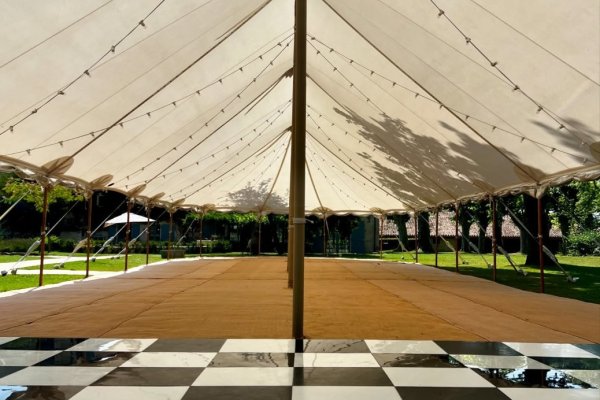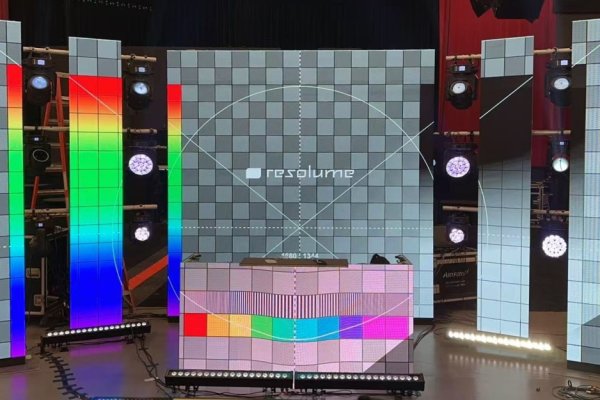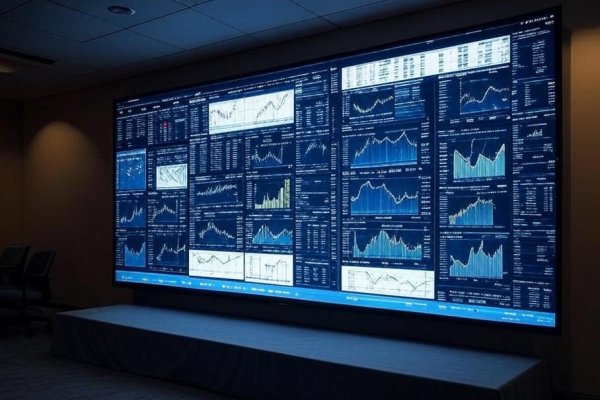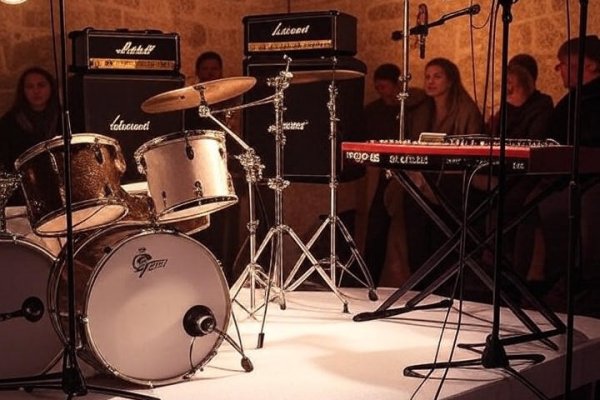Technical Analysis of Fete24 Stretch Tent Safety | Engineering for Secure Events
20/04/2025Introduction
Safety is the cornerstone of successful outdoor events, where temporary structures like stretch tents face challenges from wind, fire, and human activity. Fête24, a family-owned event hire company based in Dordogne, France, prioritizes safety in its stretch tents, designed to meet stringent European standards. This article provides an in-depth technical analysis of the safety features of Fête24 stretch tents, focusing on wind resistance, fire safety, and structural integrity. Drawing on the Loading Certificate and Setup Manual, we explore the engineering and testing behind these tents. Additionally, we include a comprehensive risk assessment example, showcasing Fête24’s commitment to providing detailed safety planning for every hire. For inquiries, contact Fête24 at +33 7 66 43 02 11 or bonjour@fete24.com.
The Critical Role of Stretch Tent Safety
Stretch tents, used for weddings, festivals, and corporate events, must withstand environmental hazards and ensure occupant safety. Risks such as wind-induced collapse, fire spread, or structural failure can lead to injuries or property damage. Fête24 stretch tents are engineered to comply with EN 13782, the European standard for temporary structures, which ensures safety for public use through structural integrity and occupant safety measures, and EN 1991-1-4, which governs wind actions on structures, crucial for determining wind loads. These standards mandate rigorous design, testing, and maintenance protocols, ensuring reliability in diverse conditions.
Wind Resistance and Structural Stability
Wind is a primary threat to tent stability, capable of causing uplift, sliding, or overturning. Fête24 stretch tents are certified to withstand peak wind pressures of 605 N/m² at 10 meters height, equivalent to approximately 113 km/h (70 mph), as per the Loading Certificate. This wind speed, calculated using the dynamic pressure formula ( q = \frac{1}{2} \rho v^2 ) (where ( \rho = 1.25 , \text{kg/m}^3 ), yielding ( v \approx 31.1 , \text{m/s} )), corresponds to near gale-force winds on the Beaufort scale, capable of swaying trees and challenging mobility.
Comparative Analysis of Wind Resistance
Fête24's stretch tents are engineered to withstand winds of up to 113 km/h (70 mph), outperforming many alternatives. Standard event tents typically manage only 20-30 mph, while even engineered tents often peak at 60 mph. This superior wind resistance stems from compliance with EN 13782, the European standard for temporary structures, ensuring rigorous safety benchmarks. For event organizers, this translates to greater reliability in unpredictable weather, reducing the risk of disruptions or safety concerns compared to less robust options.
Wind Load Capacities by Terrain
The Loading Certificate details wind speed tolerances across terrain categories, reflecting variations in wind behavior due to surface roughness. The table below summarizes 10-minute average wind speeds, Beaufort scale ratings, and peak wind speeds:
|
Terrain Category |
10-Minute Average Wind Speed |
Beaufort Scale |
Peak Wind Speed |
|---|---|---|---|
|
Coastal |
>17.94 m/s (>64.57 km/h) |
>7 BFT |
>113 km/h |
|
Flat, Open |
>18.89 m/s (>67.99 km/h) |
>7 BFT |
>113 km/h |
|
Rural |
>21.08 m/s (>75.88 km/h) |
>8 BFT |
>113 km/h |
|
Village |
>24.99 m/s (>89.97 km/h) |
>9 BFT |
>113 km/h |
|
Urban |
>26.08 m/s (>93.89 km/h) |
>9 BFT |
>113 km/h |
These capacities make Fête24 tents suitable for diverse environments, from exposed coastal venues to urban settings with higher turbulence. Organizers must monitor weather forecasts and evacuate if winds approach these limits.
Design Features for Wind Resistance
Fête24 tents incorporate several engineering features to enhance wind resistance:
-
Flexible Fabric: The Sioen RP5639 fabric distributes wind stress evenly, reducing tear risks. This PVC-coated polyester fabric, weighing 730 g/m², is designed for stretch tents, offering not only durability but also waterproofing with a likely water column rating above 50 meters and UV resistance, ensuring long-term performance in outdoor conditions.
-
Aerodynamic Shape: Configurable setups allow low-profile designs that minimize wind resistance.
-
Robust Anchoring: Heavy-duty pegs, tensioning straps, and ratchets secure the tent, preventing uplift.
-
Pole Materials: The poles, including the 4m center pole with Ø105mm, are made of structural-grade aluminum, providing strength, lightweight handling, and corrosion resistance, which is essential for maintaining stability in varying weather conditions.
The Setup Manual emphasizes a six-step process to ensure stability:
-
Lay canvas on a tarp, attaching poles with carabiners.
-
Hammer pegs 1.5 meters from the canvas, using two per corner pole.
-
Attach tensioning straps and ropes without initial tension.
-
Raise corner and side poles with minimal strap tension.
-
Hoist the center pole with a mast cap, avoiding weld seams.
-
Stretch the tent and secure V-ropes for drainage.
Safe Setup Guidelines
Correct installation is key to Fête24 tent safety. Follow these steps:
-
Site Prep: Clear and level the ground.
-
Tensioning: Secure evenly to avoid wind lift.
-
Anchoring: Use specified stakes or ballast (e.g., two stakes per corner pole).
Check weather forecasts and train staff on emergency protocols. Fête24’s Setup Manual provides detailed guidance to ensure optimal stability and safety.
Anchoring and Ballast Requirements
Anchoring is critical to resist wind and other forces. The Loading Certificate specifies anchor forces with a safety factor (( \gamma = 1.2 )) to account for load uncertainties.
Anchor Forces
The table below details design resistance for anchor forces, extracted directly from the Loading Certificate (Page 8):
|
Element |
Force (kN) (( \gamma = 1.2 )) |
|---|---|
|
Guy rope - long side |
7.79 kN |
|
Guy rope - short side |
7.62 kN |
|
Guy rope - corner |
18.51 kN |
|
Storm belt |
8.96 kN |
Corners require higher forces due to greater wind exposure, reflecting the structural demands in high-wind scenarios.
Anchor Specifications
Multiple anchors per guy rope ensure stability, with each anchor (30 mm diameter, 1000 mm length) providing 5.10 kN capacity in dense, non-cohesive soil, as specified in the Loading Certificate (Page 8). The table below summarizes requirements:
|
Element |
Number of Anchors |
Anchor Size |
Safety Check (Fd/Frd < 1) |
|---|---|---|---|
|
Guy rope - long side |
2 |
Ø30 x 1000 mm |
0.55 |
|
Guy rope - short side |
2 |
Ø30 x 1000 mm |
0.53 |
|
Guy rope - corner |
3 |
Ø30 x 1000 mm |
0.86 |
|
Storm belt |
2 |
Ø30 x 1000 mm |
0.63 |
Ballast Requirements
For non-penetrable surfaces, ballast secures the tent. Requirements vary by friction coefficient (( \mu )) and floor system use, as detailed in the Loading Certificate (Page 8):
|
Element |
Without Floor, ( \mu=0.4 ) (kg) |
Without Floor, ( \mu=0.6 ) (kg) |
With Floor (kg) |
|---|---|---|---|
|
Guy rope - long side |
2100 |
1500 |
500 |
|
Guy rope - short side |
2000 |
1500 |
500 |
|
Guy rope - corner |
4700 |
3600 |
1300 |
|
Storm belt |
2200 |
1700 |
700 |
Anchor testing with a spring balance is recommended for variable soil conditions to ensure the anchors meet the specified capacities.
Fire Safety and Material Testing
Fire safety is critical for public events. Fête24 tents use Sioen RP5639 (FLEXITENT SINGLE M2), a knitted polyester fabric with fire-retardant PVC coating, achieving an M2 classification per French standards (Arrêté du 21 Novembre 2002). Tested at FCBA Fire Laboratory, the fabric underwent:
-
Electrical Burner Test: Assesses flame reaction.
-
Flame Persistence Test: Measures post-flame burning time.
-
Dripping Test: Ensures no flaming droplets.
The M2 rating, valid until July 13, 2026, confirms moderate fire reaction, suitable for event tents. The fabric’s 730 g/m² mass and 0.75 mm thickness enhance durability.
Detailed Fire Safety Explanation
Fête24 tents carry an M2 fire safety classification, indicating a moderate reaction to fire—ideal for public events. This rating, validated through tests like the Electrical Burner, Flame Persistence, and Dripping Tests at FCBA Fire Laboratory, ensures the Sioen RP5639 fabric resists ignition and slows fire spread. Compared to international standards like Germany’s B1 (low flammability) or the UK’s Class 1 (surface spread resistance), M2 aligns with global event safety expectations. This robust fire-retardant performance offers enhanced protection in crowded settings.
Structural Analysis and Verification
Fête24 tents undergo static analysis using EASY FCS software by TECHNET GmbH, performing non-linear, second-order analysis for deformable membranes. Load combinations include self-weight, pre-stress, snow, user load, and wind (suction and pressure). All components—membrane, poles (e.g., 4m center pole, Ø105mm), ropes, and storm belts—show utilization checks (UC < 1), ensuring safety margins.
Comprehensive Risk Assessment Example
Fête24 provides tailored risk assessments with every hire, identifying hazards, assessing risks, and proposing mitigations. Below is an example for a stretch tent at a wedding in Dordogne:
|
Hazard |
Risk Description |
Likelihood |
Severity |
Control Measures |
|---|---|---|---|---|
|
High Winds |
Tent collapse, guest injury |
Medium |
High |
Monitor forecasts, use storm belts, secure anchors (3 per corner), evacuation plan |
|
Fire |
Burns, smoke inhalation |
Low |
High |
M2 fire-retardant fabric, ban open flames, provide extinguishers, clear exits |
|
Structural Failure |
Collapse due to component failure |
Low |
High |
Pre-event inspections, use certified poles/ropes, follow Setup Manual |
|
Trip Hazards |
Falls from guy ropes/pegs |
Medium |
Medium |
Secure ropes, use warning signs, ensure adequate lighting |
|
Electrical Hazards |
Electrocution, fire from equipment |
Low |
High |
Certified equipment, proper grounding, keep cables dry, professional installation |
|
Overcrowding |
Crushing, evacuation issues |
Medium |
High |
Limit occupancy, mark exits, train staff on emergency procedures |
|
Weather (Rain) |
Slippery surfaces, water pooling |
Medium |
Medium |
Ensure drainage via V-ropes, use non-slip flooring, regular surface checks |
Additional Risk Assessment Examples
Building on this, Fête24 tailors safety planning to specific scenarios. Additional examples include:
-
Weather Risks: Heavy rain may cause water pooling. Solution: Proper tensioning and V-rope drainage.
-
Human Factors: Overloading with decorations risks structural strain. Solution: Adhere to Fête24’s weight limits.
-
Environmental Hazards: Nearby trees could fall in high winds. Solution: Select sites clear of such risks.
These detailed assessments, factoring in location and event specifics, showcase Fête24’s proactive safety approach.
Ongoing Safety and Maintenance
Safety extends beyond design. The Setup Manual recommends regular inspections of fabric, poles, and anchors for wear. Fête24 offers maintenance guidance and setup support to ensure compliance with safety protocols. For long-term setups, an optional center pole foot enhances stability.
Emergency Procedures
In case of adverse weather, such as high winds, it is essential to follow Fête24's emergency protocols, which include monitoring weather forecasts, evacuating the tent if necessary, and securing or lowering the structure to prevent damage. These protocols are based on best practices from event safety standards, ensuring a swift and safe response to potential hazards.
Maintenance and Client Support
Fête24 ensures lasting safety with regular fabric and anchor inspections, plus setup training resources. Clients can request personalized safety consultations, extending tent longevity and reinforcing event security.
Client Testimonials and Case Studies
Real-world experiences highlight Fête24’s reliability:
-
“Our coastal wedding faced 50 mph winds, but the Fête24 tent stood firm—guests felt secure.” – Sarah T., Bride.
-
“The fire-retardant fabric gave us peace of mind at our dry, windy festival.” – Mark R., Organizer.
Additionally, documented case studies show Fête24 tents withstanding extreme conditions, such as high winds or heavy rain, further validating their performance and safety. For example, during a music festival in the South of France, a Fête24 tent successfully endured unexpected gale-force winds, ensuring the event continued without interruption.
These accounts and case studies validate the tents’ performance under tough conditions, boosting confidence for event planners.
Visual Aids
To further support event planners, Fête24 offers additional resources on their website, including:
-
A Tent Type Comparison Table, showing how Fête24 stretch tents outperform standard and engineered tents in wind resistance.
-
A Downloadable Risk Assessment Template, helping organizers identify and mitigate potential hazards.
-
A Setup Checklist, ensuring all safety steps are followed during installation.
These tools make it easier to understand and implement the technical aspects of tent safety.
Conclusion
Fête24 stretch tents are engineered for safety, withstanding winds up to 113 km/h and meeting fire safety standards through M2-classified fabric. Compliance with EN 13782 and EN 1991-1-4, rigorous testing, and robust design ensure reliability. The provision of detailed risk assessments, as exemplified above, underscores Fête24’s commitment to secure events. For your next event, trust Fête24 to deliver safety and elegance. Contact us at +33 7 66 43 02 11 or bonjour@fete24.com, or visit fete24.com.











